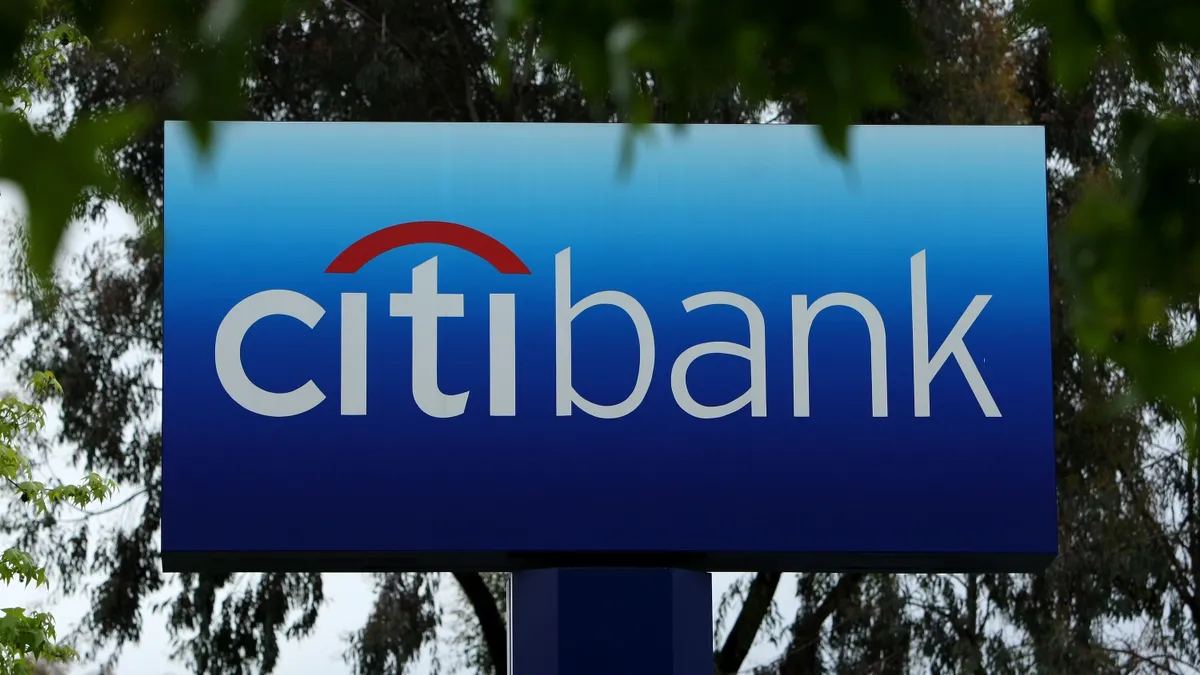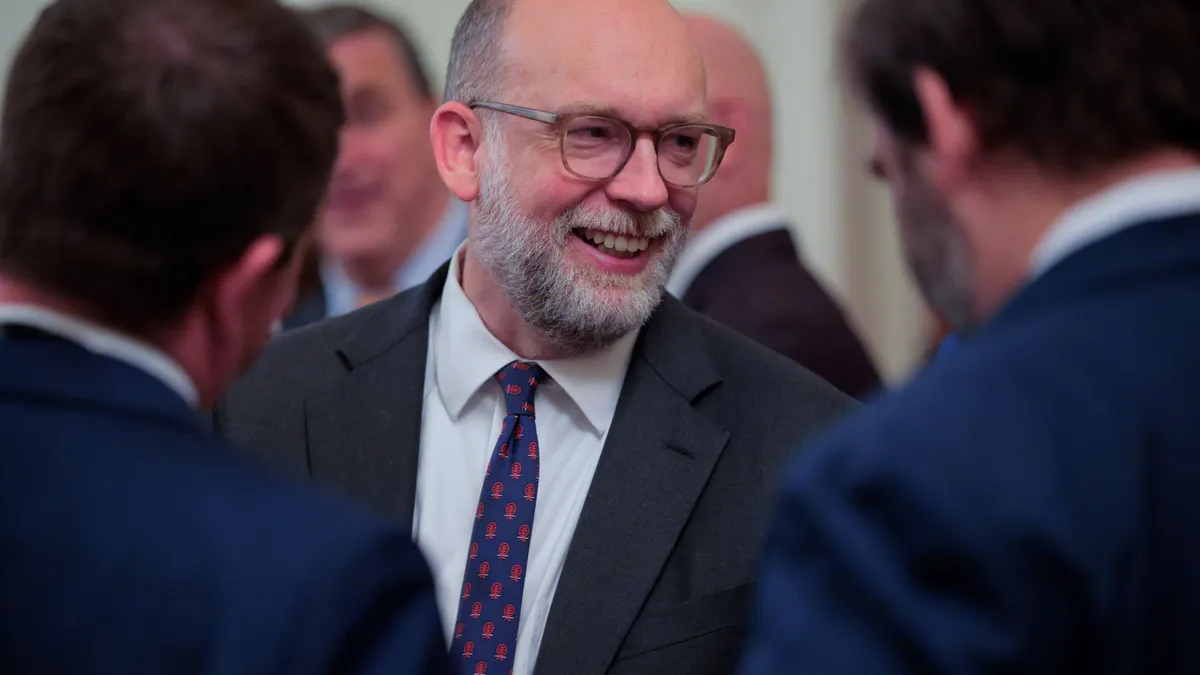Dive Brief:
- Citi CFO Mark Mason was the highest-paid finance chief in the U.S. banking industry in 2022, with total adjusted compensation of approximately $15 million, according to an S&P Global Market study released Thursday.
- Mason, a 22-year veteran of the New York City-based bank, who has served as its finance chief since 2019, regained the top spot after losing out to Bank of America’s Alastair Borthwick in 2021, S&P found in its annual study of compensation trends.
- Wells Fargo CFO Mike Santomassimo, meanwhile, was 2022’s second-highest-paid finance chief with total adjusted compensation of $12.8 million — representing a 6.8% increase from 2021. Santomassimo’s compensation included a stock award of $7.9 million, the second-highest such sum awarded to a CFO last year, according to the study.
Dive Insight:
The $15 million Mason raked in last year included $7.2 million in stock awards, a $5.2 million bonus and a base salary of $1 million, according to Citi’s most recent proxy statement. This represents a 12.6% increase from 2021, according to S&P Global.
Borthwick, meanwhile, slipped from first to third on the list, receiving $12.6 million in total compensation for 2022. This represents an 11.8% decline, which can be attributed partly to a reduction in cash compensation from 2021.
Borthwick received a cash bonus of $3.8 million for 2022, compared with the $4.1 million he received in 2021, according to Bank of America’s most recent proxy statement. But also, the value of his time-restricted and performance-related stock units fell to $2.85 million in 2022, from $3.1 million in 2021. Borthwick received a base salary of $1 million in 2022, up from $666,667 a year earlier.
Mason, Borthwick and Santomassimo’s compensation for the past year follows a strong rebound by the banking industry after the pandemic, with bank profitability reaching a 14-year high in 2022, McKinsey found. However, geopolitical as well as economic turmoil lingering from the pandemic had already begun to impact the sector, “exacerbating fragilities,” McKinsey said.
Cracks in the space widened in 2023, with the banking industry reeling from shock waves including the high-profile failure of Silicon Valley Bank, swiftly followed by that of Signature Bank, among other ripple effects.
Facing inflation, labor market challenges and other headwinds, banks have focused in improving costs — with Citi, for example, both reducing its headcount and increasing its investment into technology initiatives surrounding new tools such as generative AI.
Citi’s tech initiatives were expected to drive 5,000 job cuts by the end of June. Further cost tightening by the bank could potentially include cutting a layer of upper management — something that comes as Citi deals with a slew of executive departures and considers large-scale changes in its overall strategy.
The bank is considering breaking up its Institutional Clients Group into three distinct segments, a move which follows the announcement that ICG head Paco Ybarra would be leaving the bank. It is also renewing its focus on its wealth management sector, as part of a new initiative which aims to place the emphasis on people rather than products, bank executives said.











